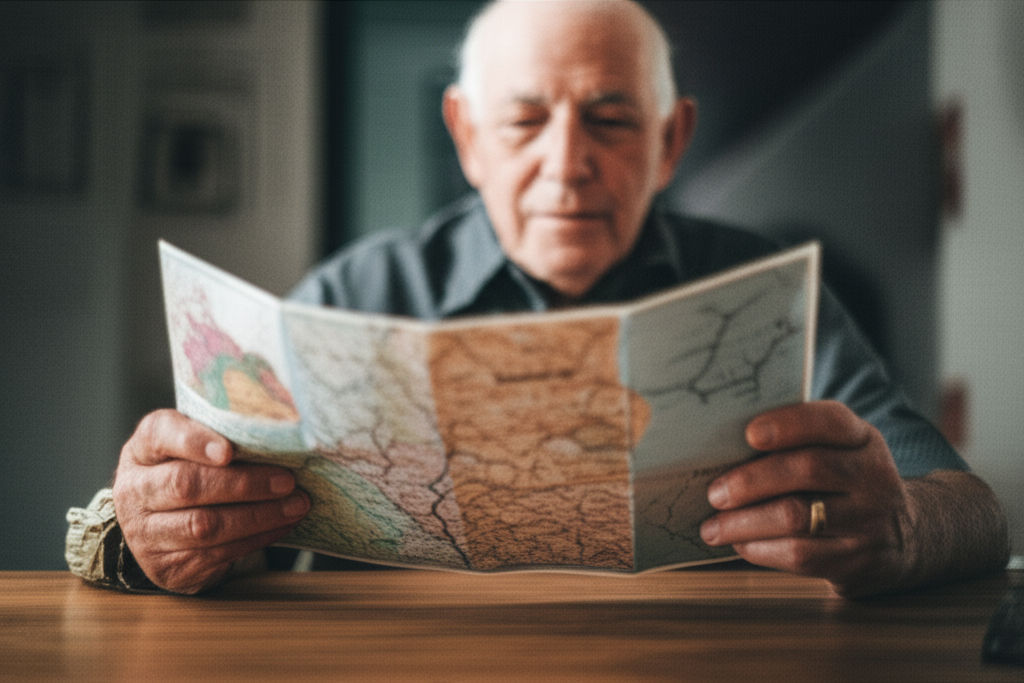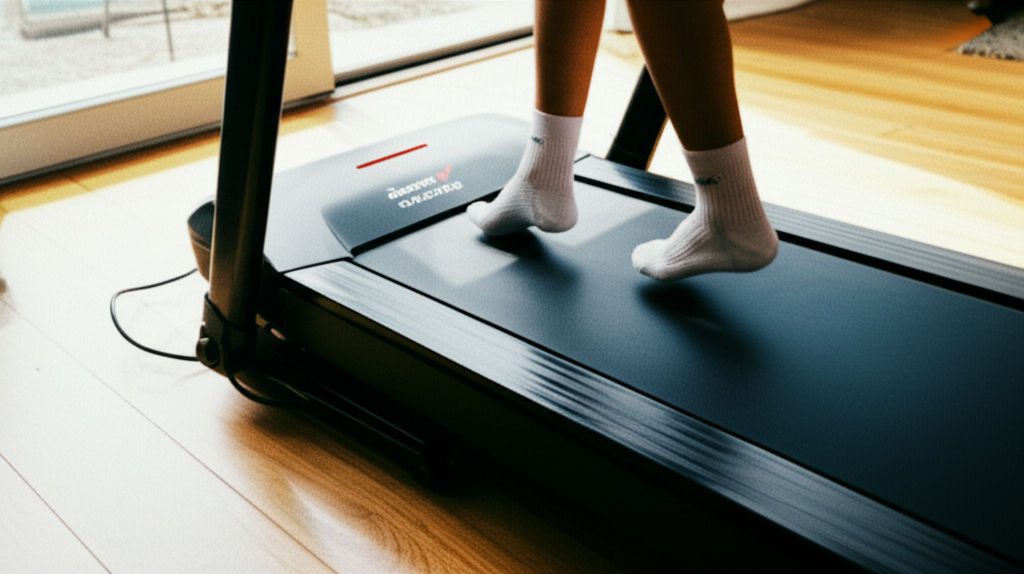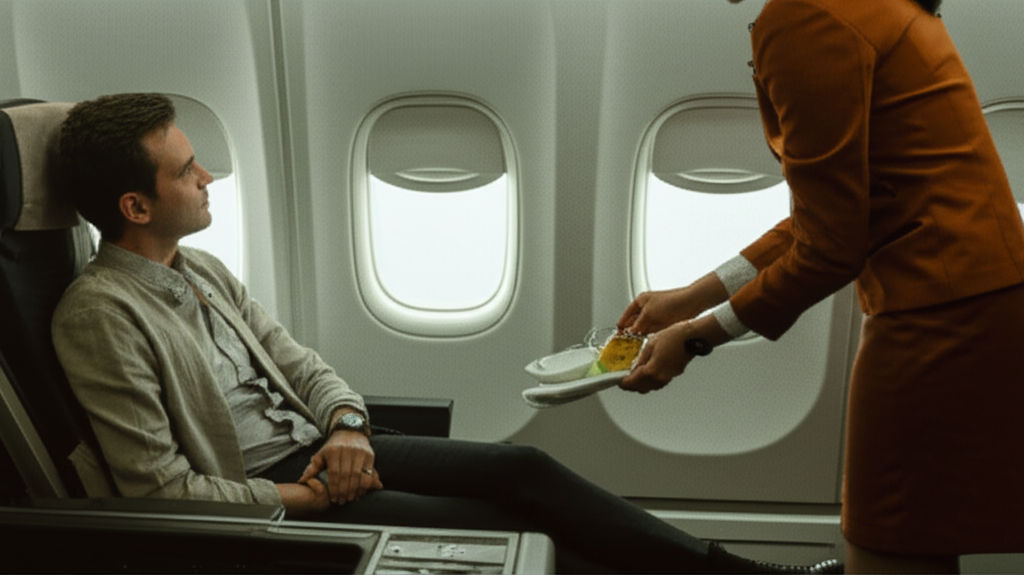Understanding VA Travel Pay for Vets
Ikhsan Rizki

Photo: Unlock VA travel pay for vets! This guide demystifies eligibility, application, and reimbursement for medical travel. Claim the benefits you've earned.
Navigating Your Journey: Understanding VA Travel Pay for Vets
For many veterans, accessing essential medical care often involves travel, which can become a significant financial burden. The Department of Veterans Affairs (VA) understands this challenge and offers a crucial benefit: VA travel pay, officially known as Beneficiary Travel. Yet, despite its importance, many veterans find themselves navigating a confusing maze of eligibility rules, application processes, and reimbursement details. Are you leaving money on the table that could ease your travel stress?
This comprehensive guide is designed to demystify Understanding VA Travel Pay for Vets. We’ll break down who qualifies, how to apply, and what to expect, ensuring you can confidently claim the benefits you've earned. Let's embark on this journey together to unlock your VA travel reimbursement.
What is VA Travel Pay and Who is Eligible?
At its core, VA Beneficiary Travel is a program designed to reimburse eligible veterans for the cost of travel to and from VA-approved appointments. This isn't just about mileage; it can extend to public transportation, tolls, and in some cases, even meals and lodging. But who exactly qualifies for this vital support?
Defining VA Beneficiary Travel
VA travel pay aims to alleviate the financial strain of traveling for medical care. This typically includes reimbursement for mileage driven in a personal vehicle, but it can also cover commercial transportation like buses, taxis, or even air travel if medically necessary and pre-approved. The goal is to ensure that geographic distance or financial constraints don't prevent veterans from receiving the care they need.
Key Eligibility Criteria for VA Travel Reimbursement
Understanding VA Travel Pay for Vets begins with knowing the eligibility requirements. The VA outlines specific criteria, and meeting at least one of them is essential for your claim.
- Service-Connected Conditions: If you are traveling for treatment of a service-connected disability, you are generally eligible for reimbursement. This is one of the most common pathways to VA travel pay.
- Income-Based Eligibility:
- You are receiving a VA pension.
- Your annual income does not exceed the maximum annual VA pension rate.
- You cannot afford to pay for your travel, as determined by VA criteria (often linked to Medicaid eligibility).
- Specific Appointment Types:
- Compensation and Pension (C&P) Exams: Travel for these mandatory exams is typically covered, regardless of other eligibility criteria.
- Scheduled Appointments: For care at a VA facility or authorized non-VA care.
- Emergencies: Travel for emergency treatment at a non-VA facility may be covered if the VA determines it was an emergency and VA facilities were not readily available.
- Specific Programs: Travel for certain programs like vocational rehabilitation or specific clinical trials.
- Disabled American Veterans (DAV) Transportation: For veterans who might not meet other eligibility criteria, the DAV often provides free transportation services to VA medical appointments through their volunteer driver program. This is a fantastic resource to explore if you need assistance.
It's crucial to note that simply having a VA appointment doesn't automatically guarantee travel pay. Always verify your specific eligibility before your trip.
How to Apply for VA Travel Pay: A Step-by-Step Guide
Once you understand the eligibility, the next step is knowing how to submit your claim for VA travel reimbursement. The process has become significantly streamlined with online options, but traditional methods are still available.
Before Your Appointment: Preparation is Key
Preparation can save you time and hassle when seeking VA travel pay for vets.
- Confirm Your Appointment: Ensure your appointment is scheduled and confirmed. You'll need the date and time.
- Gather Identification: Have your VA ID card or other valid identification ready.
- Know Your Travel Details: Be aware of your starting address and the VA facility's address. If using public transport, keep receipts.
- Set Up Direct Deposit: The VA primarily uses direct deposit for reimbursements. If you haven't already, ensure your bank account information is on file with the VA to avoid delays.
Submitting Your Claim: Options and Tips
The VA offers several ways to submit your beneficiary travel claim. The most efficient method for many is online.
-
Online: The Beneficiary Travel Self-Service System (BTSSS)
- The BTSSS is the VA's preferred method for submitting claims. You can access it through the AccessVA website.
- Step 1: Register/Log In: If you haven't used AccessVA before, you'll need to register. Existing users can log in with their DS Logon, My HealtheVet, or ID.me credentials.
- Step 2: Navigate to BTSSS: Once logged in, find and select the Beneficiary Travel Self-Service System.
- Step 3: Select Your Appointment: The system often pre-populates your scheduled appointments. Select the one for which you are claiming travel.
- Step 4: Enter Travel Details: Input your travel dates, mode of transportation (e.g., personal vehicle, public transport), and any associated costs (tolls, parking receipts).
- Step 5: Upload Receipts (If Applicable): For public transportation, tolls, or other non-mileage costs, you will need to upload clear images of your receipts.
- Step 6: Review and Submit: Carefully review all the information before submitting your claim.
- Tip: Submit your claim as soon as possible after your appointment, ideally within 30 days. You typically have up to 30 days from the date of the appointment to submit a claim, though some exceptions might apply.
-
In-Person at the VA Facility:
- Many VA medical centers have kiosks or dedicated Beneficiary Travel offices where you can submit claims immediately after your appointment. This is often convenient if you prefer in-person assistance.
- Ask staff at the front desk or information desk for directions to the Beneficiary Travel office or kiosk.
-
By Mail:
- You can also fill out VA Form 10-3542, "Beneficiary Travel Claim," and mail it to your VA medical center. This method is generally slower.
- Ensure you include all necessary documentation and contact information.
What to Expect After Submission
After submitting your claim, patience is key.
- Processing Times: Processing times can vary depending on the VA facility and the volume of claims. It can range from a few days to several weeks.
- Payment Methods: As mentioned, direct deposit is the primary method. Ensure your banking information is current with the VA.
- Checking Claim Status: You can often check the status of your claim through the BTSSS online system or by contacting the Beneficiary Travel office at your VA medical center.
Common Scenarios and Special Considerations for VA Travel Pay
Understanding VA Travel Pay for Vets also involves knowing about less common but important scenarios.
Non-Service Connected Conditions and Emergencies
While travel for service-connected conditions is a primary qualifier, you might still receive reimbursement for non-service connected care if:
- You meet the income-based eligibility criteria.
- You are traveling for a Compensation and Pension (C&P) exam.
- It was an approved emergency at a non-VA facility where VA care was unavailable, and you meet other criteria.
Companion Travel Benefits
In some cases, the travel expenses for a medically required attendant or caregiver may also be covered. This typically applies if your medical condition necessitates someone accompanying you to your appointment for your safety or assistance. This must generally be approved by a VA clinician.
Understanding Deductibles and Limits
The VA implements a deductible for certain types of travel pay. As of current policy, a deductible may apply per one-way trip, with a maximum annual deductible. However, there are exceptions, such as travel for C&P exams or specific hardship cases. Always check the latest deductible amounts and exceptions on the VA's official website or with your local VA Beneficiary Travel office. Mileage reimbursement rates are also subject to change, so verify the current rate.
Maximizing Your VA Travel Pay Benefits
To ensure you get the most out of your VA travel benefits:
- Keep Detailed Records: Maintain a log of your appointments, mileage, and any related expenses (tolls, parking, public transport tickets).
- Submit Claims Promptly: Don't delay! Submitting your claim soon after your appointment reduces the chance of forgetting details or missing the submission window.
- Ask Questions at the VA Facility: If you have any doubts or encounter issues, don't hesitate to speak with staff at the Beneficiary Travel office at your VA medical center. They are there to assist you.
- Utilize DAV Services: If you face transportation challenges or don't meet VA travel pay eligibility, explore the Disabled American Veterans (DAV) transportation network. Their volunteers provide invaluable support.
Conclusion
Understanding VA Travel Pay for Vets is a fundamental step toward ensuring you receive the medical care you need without undue financial stress. By knowing your eligibility, preparing for your claims, and utilizing the available submission methods, you can effectively access this vital benefit. The VA's Beneficiary Travel program is a testament to the nation's commitment to its veterans, and you deserve to take full advantage of it.
Have you experienced the VA travel pay system? What tips would you share with fellow veterans? Share your insights in the comments below, or explore our other articles on navigating VA benefits for a more comprehensive understanding of your entitlements.
Frequently Asked Questions (FAQ)
How long does it take to get VA travel pay?
Processing times for VA travel pay can vary, but typically range from a few days to several weeks. Using the Beneficiary Travel Self-Service System (BTSSS) online often results in faster processing than mail-in claims. You can check the status of your claim through the BTSSS portal.
Can I get travel pay for appointments outside the VA?
Yes, in certain circumstances, you can receive VA travel pay for appointments with non-VA providers. This usually applies if the care is authorized by the VA (e.g., through community care programs), for emergency care at a non-VA facility, or if you meet specific eligibility criteria for non-service connected care. Always confirm with the VA before your appointment.
Is there a limit to how much VA travel pay I can receive?
While there isn't a strict overall monetary limit, the VA does apply a deductible per one-way trip, with a maximum annual deductible for certain types of travel. Mileage rates are also standardized. However, specific exceptions exist, such as for Compensation and Pension (C&P) exams, which are typically exempt from deductibles. It's best to check the latest VA guidelines or consult with your local VA Beneficiary Travel office for current rates and deductible information.
What if my VA travel pay claim is denied?
If your VA travel pay claim is denied, you typically have the right to appeal the decision. The denial letter should provide information on how to file an appeal. You can also contact your local VA Beneficiary Travel office for clarification on the denial reason and assistance with the appeal process. Gather any additional documentation that might support your claim before appealing.
Business
View All
October 2, 2025
Utah SOS Business Search HelpUnlock crucial business info in Utah! Learn how to use the Utah SOS Business Search for name availability, due diligence, status checks & more.
Ikhsan Rizki

November 3, 2025
Why Try Square Business CardsDitch the rectangle! Square business cards offer a modern, distinctive design to make your brand stand out and create an unforgettable first impression.
Ikhsan Rizki

September 21, 2025
Dinner Suit or Business Suit GuideMaster your formal wardrobe! Learn the key differences between business suits and dinner suits (tuxedos) and when to wear each with confidence.
Ikhsan Rizki

November 2, 2025
Principal Business Code ExplainedDemystify your Principal Business Code! This guide simplifies IRS business classification, helping you confidently find the right code.
Ikhsan Rizki

November 10, 2025
Business Analyst Jobs Near You TodayUnlock your career! Discover what a Business Analyst does, why BA jobs are in high demand, and how to find & secure your role today.
Ikhsan Rizki

November 17, 2025
Can You Edit a Business Wire Press ReleaseNeed to edit a Business Wire press release? This guide reveals the critical window for changes & offers tips for flawless accuracy before distribution.
Ikhsan Rizki
Economy
View AllUpgrade your flight with EVA Air Premium Economy! Enjoy more legroom, wider seats, and superior comfort at an affordable price. Your ideal long-haul choice.
Ikhsan Rizki
Economy lube: Is it a smart save or a hidden cost? Learn the truth about budget car maintenance to protect your wallet and your ride.
Ikhsan Rizki
Master booking economy car rentals in Orlando! Get expert tips to save big on your Florida trip and explore the Theme Park Capital affordably.
Ikhsan Rizki
Unlock smarter Frontier travel! Discover how the Economy Bundle saves you money by bundling essentials & avoiding hidden fees.
Ikhsan Rizki
Unlock prosperity in Cities: Skylines II! Explore the new Economy 2.0, granular taxation, and expert strategies for a thriving metropolis.
Ikhsan Rizki
Demystify capitalism! Understand its principles, benefits, challenges, and global impact. Explore prominent capitalist economies worldwide.
Ikhsan Rizki
Education
View AllExplore Helios Education Foundation's profound impact on education in Arizona & Florida, empowering students and fostering community prosperity.
Read MoreHealth educator seeking flexibility? Discover remote jobs, essential skills, and steps to a rewarding work-from-home career. Your guide is here!
Read MoreUnlock your earning potential! Explore 2025 Special Education Teacher salaries, key factors influencing pay, and strategies to boost your income.
Read MoreYour roadmap to becoming a dermatologist starts here! Learn all education requirements, from undergrad to medical school & residency training.
Read MoreGet essential Griffin Spalding County Board of Education news. Our guide helps you stay informed & engaged with local school decisions shaping the community's f...
Read MoreUnlock the future of learning! Explore new features in Minecraft Education Beta & Preview, from enhanced worlds to classroom controls. Stay ahead.
Read MoreHealth
View All
August 21, 2025
What Does a Health Activist DoA health activist champions well-being, challenges systems, and drives change to improve health outcomes and fight inequality.
Ikhsan Rizki

October 12, 2025
CalViva Health Benefits ExplainedCalViva Health benefits confusing? This guide breaks down your coverage in clear, easy-to-understand language for members in Fresno, Kings, and Madera counties.
Ikhsan Rizki

October 28, 2025
Health Science Degree Jobs That PayEager for a high-paying health career? Explore top health science degree jobs that offer excellent salaries & make a difference.
Ikhsan Rizki

October 23, 2025
Cone Health Wesley Long Hospital OverviewYour guide to Cone Health Wesley Long Hospital in Greensboro. Learn about its history, comprehensive services, and commitment to exceptional care.
Ikhsan Rizki

August 6, 2025
What’s New with ArchWell HealthArchWell Health is transforming senior primary care. Learn about their innovative model, nationwide expansion, and personalized, holistic approach.
Ikhsan Rizki

November 24, 2025
Sunny Health Treadmill ReviewIs a Sunny Health treadmill right for your home gym? Get a deep dive into features, affordability, and space-saving designs to make an informed choice.
Ikhsan Rizki
Popular Articles
View All
1
2
3
4
5
6
7
8
9
10
Lifestyle
View All
September 18, 2025
What a Fifty Million Lifestyle Looks Like
Ever wonder what a $50 million lifestyle truly means? Dive into a world of unparalleled luxury, private jets, global estates, and limitless choices.

November 24, 2025
Stay at Residenza Lifestyle Hotel
Discover Residenza Lifestyle Hotel: Immerse in unique design, personalized experiences, & local culture for an unparalleled stay.

August 5, 2025
Sport lifestyle ideas for active people
Transform your busy life into an energetic sport lifestyle! Discover practical tips for daily movement, optimal nutrition, and a winning mindset to thrive.

August 26, 2025
Try Living a Country Lifestyle
Escape the city noise! Our guide shows you how to embrace a tranquil country lifestyle, detailing its benefits, practicalities, and smooth transition.

August 12, 2025
Modern Lifestyle Shop Reviews 2025
Find the best modern lifestyle shops of 2025! Our guide reviews top stores, helping you discover curated, sustainable products to define your unique style.

October 20, 2025
Lifestyle Apartments in Albuquerque
Discover lifestyle apartments in Albuquerque! Find your ideal home with tailored amenities, vibrant community, and convenience designed for your passions.

November 17, 2025
Robin Leach Changed TV Forever
Robin Leach's "Lifestyles of the Rich and Famous" transformed TV, revealing the opulent lives of the wealthy and shaping celebrity culture.

September 25, 2025
Princeton Aveda Salon You’ll Love
Seeking a salon that cares for you & the planet? A Princeton Aveda Salon offers holistic beauty, plant-based products, and a transformative experience.
Sports





Travel
View All
August 14, 2025
Understanding VA Travel Pay for Vets
Unlock VA travel pay for vets! This guide demystifies eligibility, application, and reimbursement for medical travel. Claim the benefits you've earned.

October 9, 2025
LPN Travel Jobs with Great Pay
LPNs: Want high pay & adventure? Explore travel nursing! This guide reveals lucrative LPN travel jobs, offering flexibility & the chance to see the USA.

August 10, 2025
UK Travel Packages You’ll Love
Explore the UK stress-free! Discover how curated UK travel packages simplify planning, save you money, and offer peace of mind for your dream British adventure.

September 16, 2025
CSA Travel Protection Review
Uncertain about travel insurance? Dive into our review of CSA Travel Protection (now Generali Global Assistance) to find out if their plans protect your next ad...

September 2, 2025
Inside the One9 Travel Center
One9 Travel Center: Your ultimate road stop by Pilot Flying J. Find fuel, fresh food, and amenities tailored for all travelers, including pro drivers.

October 8, 2025
Pyro Traveler Adventures in Gaming Worlds
Are you a Pyro Traveler? Ignite your passion for digital exploration and embark on unforgettable virtual journeys in vast gaming worlds!

















